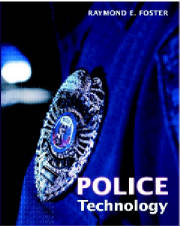|
Tools for Success: Preparing for Assessment Centers

By Rick Michelson, Contributing Writer
Assuming your either a police officer or firefighter, imagine
yourself either driving through the dark streets, the police radio
finally quiet after a night of breaking up fights, wrestling
drunks and mediating family quarrels, or as a firefighter, racing
through the streets, responding to three-alarm fires, lugging
hoses and pumping water until your arms feel like rubber. Finally,
you have a moment to think about your future with the department.
You know the next promotional exam is coming up soon, and you have
made up your mind that you are ready to promote. You feel you have
demonstrated to the department that you are "ready" for a
promotion. After all, haven't you volunteered for all the last
minute overtime assignments and "special projects", just to show
your boss that you had what it takes?
Editors Note: Rick's contribution is the third in our series of
four articles on promotions.
Read on..... |
Police Technology

|
| |
Dear Raymond,
Hi Tech Criminal Justice has passed yet another milestone - 500
subscribers! In this issue we near the end of the series of
articles on promotion; and, begin a second series on small unit
leadership.
Encourage your peers to join the ranks of our military and law
enforcement readers around the world.
|
| |
|
| |
|
Small Unit Leadership
|
| |
By Robert Mallory,
Staff Writer
Editor's Note: This article is the first in a twelve-part series
on Small Unit Leadership
This series of articles is about small unit leadership. Not
leadership in a wider organization sense, but leadership down in
the weeds. We will be looking at the kind of leadership necessary
for employees involved in highly complex problem-solving tasks
(tactical situations to interpersonal communication skills). The
primary focus is for those leaders practicing their trade with
street cops, small vice or narcotic units, or tactical teams.
Our first step will be to work out a definition of leadership. As
we progress through this series of articles we will explore how
leadership skills can be gained, honed and applied.
|
| |
Read on... |
| |
|
High Definition Scanners and Law Enforcement
|
| |
By Lt. Raymond E. Foster, LAPD (ret.), MPA
You've probably already experienced the virtual magic of laser
ground-based laser scanning, or high definition surveying (HDS).
If you have been to a recent movie or watched a particularly
"special effect" laden television show, you have seen some of what
can be done with a HDS. This relatively new technology is fast
moving into the law enforcement arena. This article will look at
how this technology impacts criminal investigations, liability,
training and homeland security.
Historically, surveying equipment has been used since people
staked their claim to real property. Still today, you definitely
don't want your neighbor to build that new fence on your side of
the property line. Property lines were determined sometime in the
past with surveying equipment that, although it did increase in
accuracy, could only measure one point, or line, at a time. You
have seen them in the middle of the street measuring in their
orange jackets. |
| |
Read on... |
| |
|
Authors of the Los Angeles Police Department
|
| |
Throughout its history, the Los Angeles Police Department has
created innovation, leaders and sometimes scandal. Beyond this,
the Los Angeles Police Department has produced more authors than
any other law enforcement agency. From academic works to crime
fiction, LAPD authors have informed, thrilled and mystified.
Captured here, in one place, you will find the collective works
of LAPD officers.
|
| |
Browse the shelves....... |
| |
|
The Doe Network
|
| |
The Doe Network is a volunteer organization devoted to assisting
Law Enforcement in solving cold cases concerning unexplained
disappearances and unidentified victims from North America,
Australia and Europe. It is their mission to give the nameless
back their names and return the missing to their families. They
accomplish their mission in three ways; by giving the cases
exposure on their website, by having our volunteers search for
clues on these cases as well as making possible matches between
missing and unidentified persons and lastly through attempting to
get media exposure for these cases that need and deserve it.
As of 2004 they have over 400 volunteers working to solve the 840
unidentified victims cases and 2650 missing persons cases on their
site. Thus far, the organization has solved 17 cases and assisted
in at least 4 other cases being solved |
| |
Visit their website.... |
|
